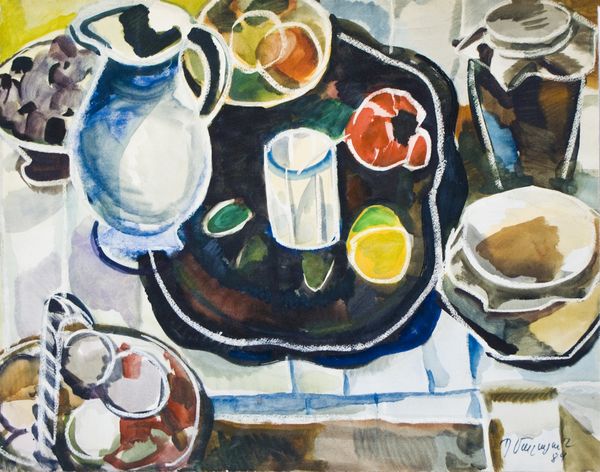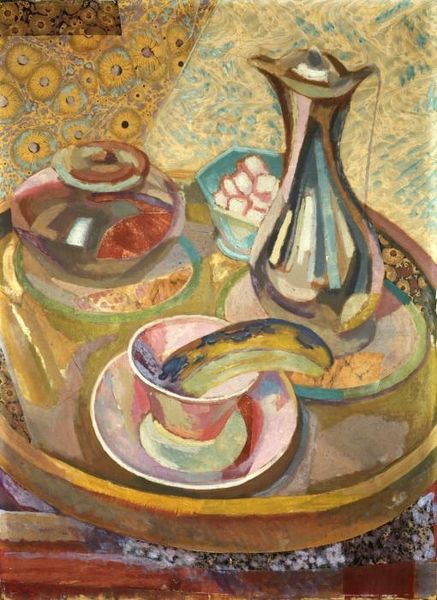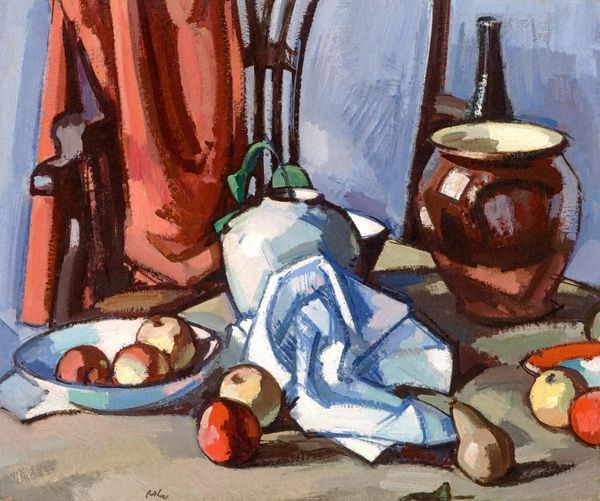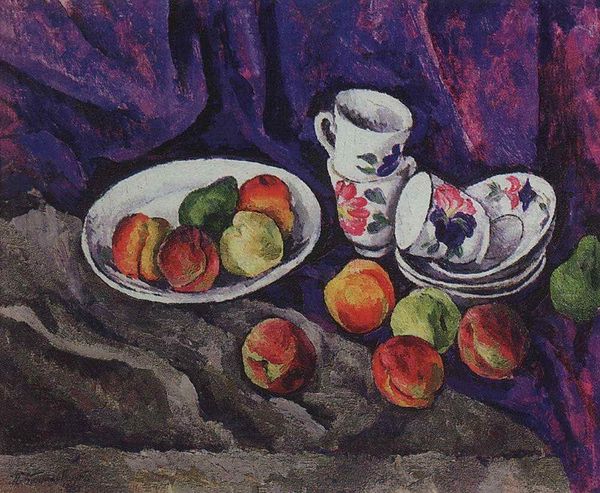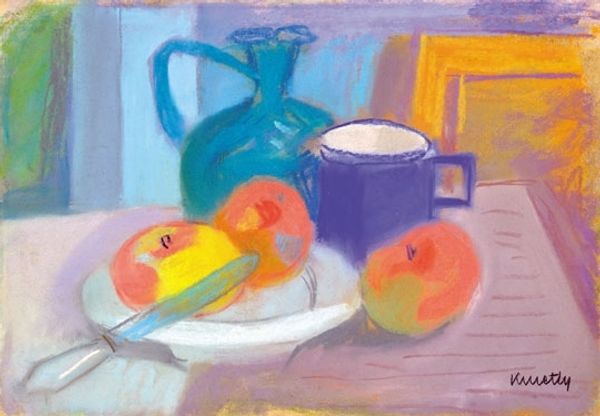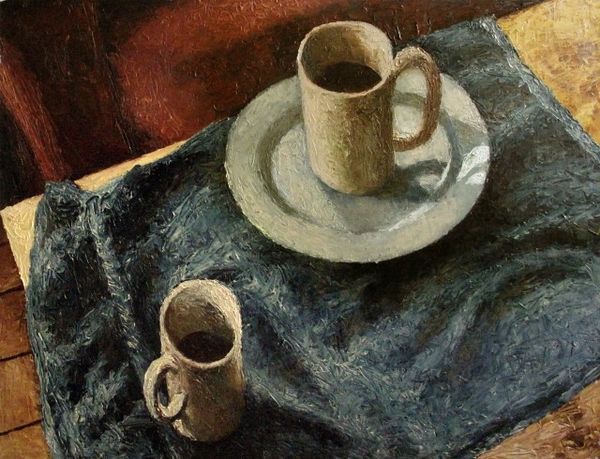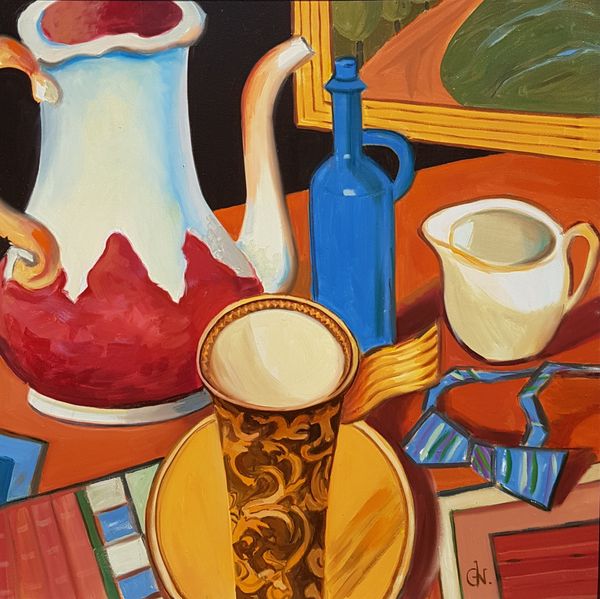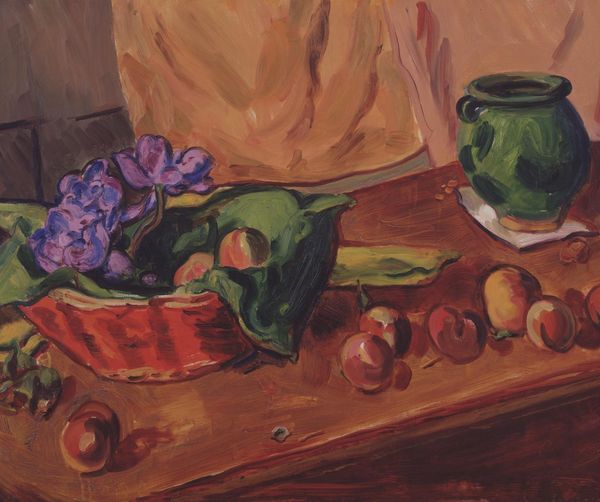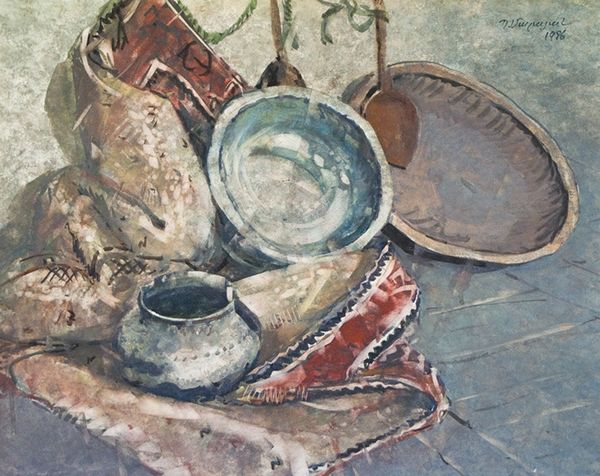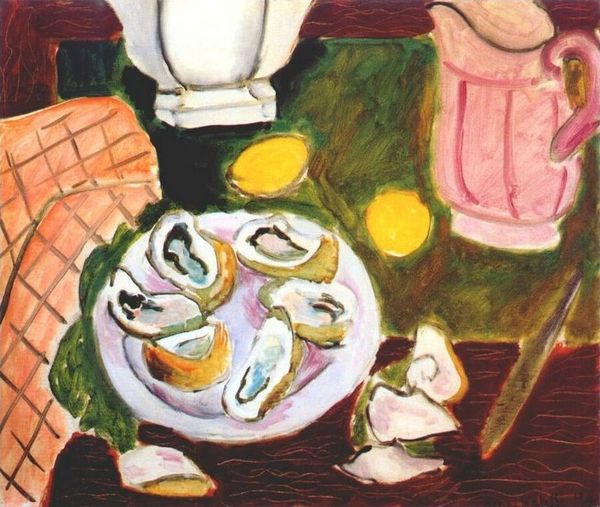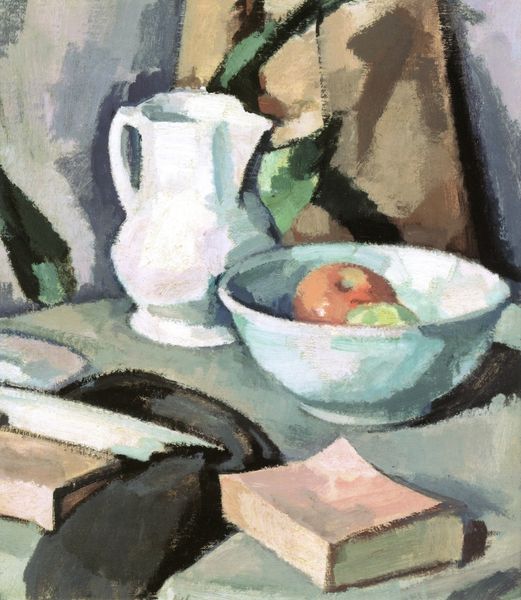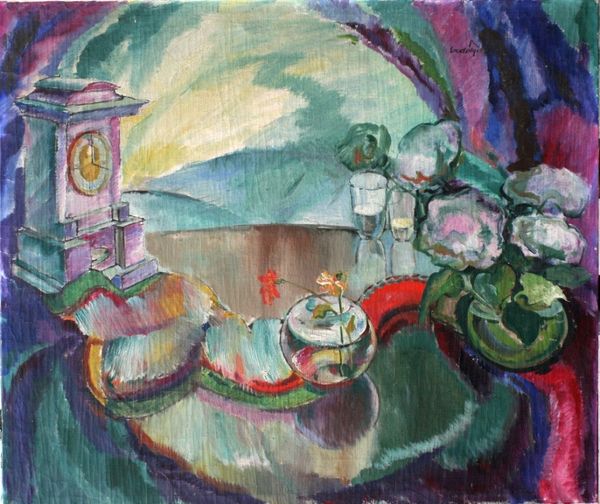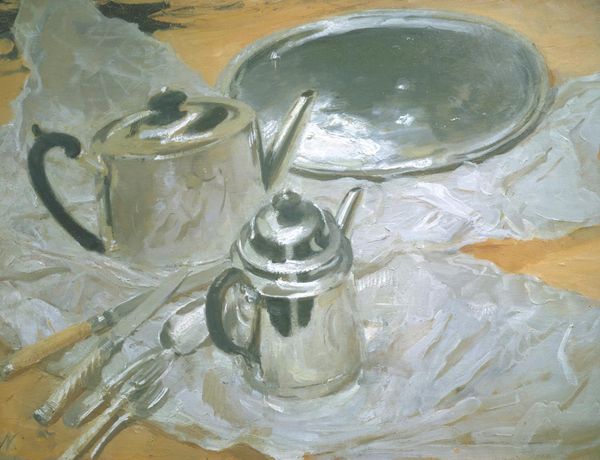
painting, impasto
#
painting
#
impasto
#
expressionism
#
modernism
Copyright: Grace Cossington Smith,Fair Use
Editor: We’re looking at “Things on an iron tray on the floor,” a painting by Grace Cossington Smith from 1928. It's a very intimate, almost haphazard arrangement of everyday objects. What historical context can you bring to understand this type of arrangement? Curator: This painting presents a domestic still life rendered with the expressive brushwork typical of Australian modernism. Considering Smith's privileged background, it’s worth noting that depictions of domesticity have historically been both celebrated and dismissed as “feminine” and therefore less significant. The “iron tray” becomes a stage on which she’s allowed to play with colour and light. Editor: So, is she reclaiming the domestic, making it a legitimate subject for high art? Curator: In a way, yes. But it's more complex. Smith’s work isn’t necessarily about celebrating domestic work itself, but rather, exploring the artistic possibilities *within* that sphere. Think about how art institutions and society valued different subject matters during that period. Where would a still life fit, and what kind of person would be expected to create one? Editor: It’s like she’s turning the tables, using the domestic setting as a space for artistic experimentation, despite its limitations. Curator: Exactly. And that's why her choice of impasto is intriguing, it seems almost… rebellious, elevating this common domestic scene. She uses colour not to replicate but to express. How does that choice make you feel? Editor: The freedom is refreshing, maybe she is pushing against conventions of representation. I guess looking at the history helps see beyond the surface! Curator: Precisely! It highlights how artists can operate within—or against— the structures of their time. And also encourages questioning of the traditionally defined separation between the artistic "high" and everyday "low."
Comments
No comments
Be the first to comment and join the conversation on the ultimate creative platform.
